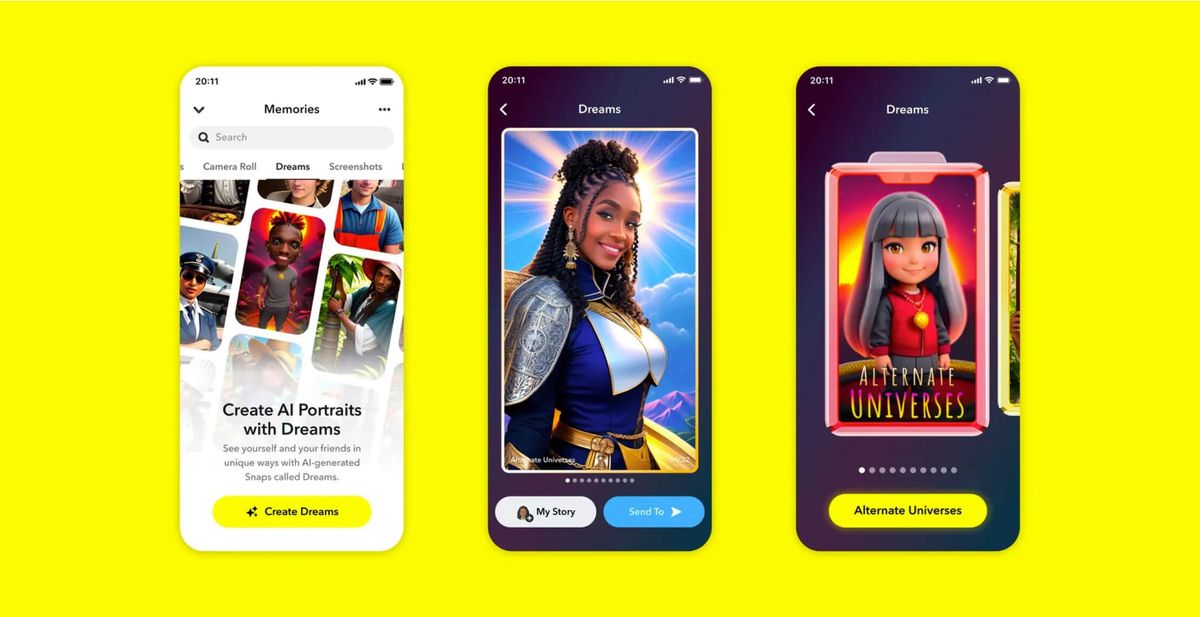
Snapchat has unveiled its latest augmented reality offering called 'Dream', which uses generative AI to let users transform their selfies into fantastical characters and scenes.
The new feature, rolling out over the next few weeks globally, allows Snapchatters to use AI to generate stylized images of themselves as mythological creatures, royalty, anime characters, and more. Users can create up to eight of these AI-generated selfies or "Dreams" for free, with additional packs available for purchase at $1 each inside the app.
To access Dream, users need to update to the latest version of Snapchat and go to their Memories section, where a new tab for Dream is now located. After capturing a few selfies, Snapchat utilizes the images to create a personalized AI model. The model is then used to generate the transformed Dream selfies depicting the user in a variety of whimsical situations and personas.
Snapchat says the images are powered by a new generative AI system trained exclusively on hundreds of thousands of hand-drawn illustrations. This allows the AI to synthesize new scenes and characters while retaining a hand-crafted, illustrative look. The company says it focused on a stylized art aesthetic both to unlock imaginative new self-expression and also to avoid issues plaguing more photorealistic AI image generation methods.
While Dreams currently features just the user in generated scenes, Snapchat confirmed the feature will soon allow two friends who have both opted-in to appear together in Dream selfies. This could let groups of friends jointly imagine themselves as characters in fantastical shared universes.
Snapchat positions Dream as the latest evolution of its augmented reality "Lenses" filters which first arrived in 2015. Since then, Lenses have enabled users to add effects like dog ears, colorful hair, and facial distortions to their photos and videos. The company says Dreams represents a leap forward in creativity and self-expression by drawing upon AI to construct entirely new realities.
Dream begins rolling out August 29 to Snapchatters in Australia and New Zealand as part of a limited release. The company says the feature will reach all global users gradually over the coming weeks.

